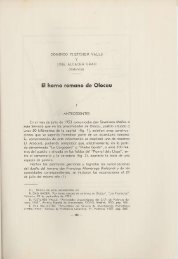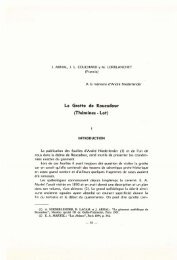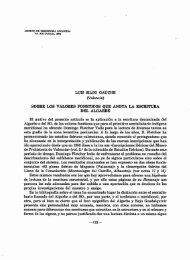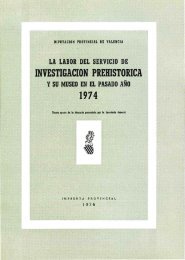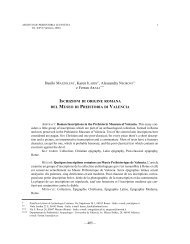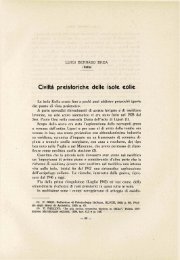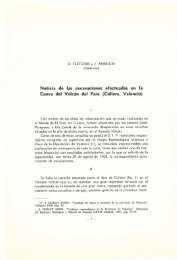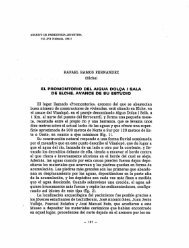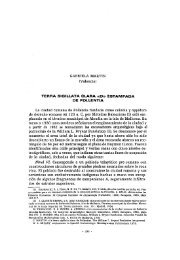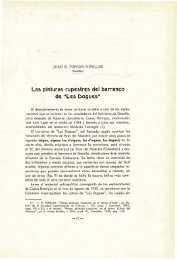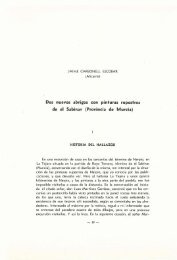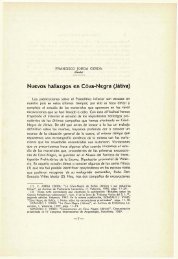Ancient Iberian Coinage - Museo Prehistoria
Ancient Iberian Coinage - Museo Prehistoria
Ancient Iberian Coinage - Museo Prehistoria
You also want an ePaper? Increase the reach of your titles
YUMPU automatically turns print PDFs into web optimized ePapers that Google loves.
Territories under Roman<br />
control and their provincial<br />
partition, ca. 197 BC<br />
Iaka<br />
Rhode<br />
Bolskan Iltirta Ausa<br />
Emporion<br />
Saltuie<br />
Barkeno<br />
Kelse<br />
Kese<br />
The Roman<br />
dominion<br />
CITERIOR<br />
After the defeat of the Carthaginians<br />
the Roman Senate decided to remain<br />
Arse<br />
in the <strong>Iberian</strong> Peninsula in order to<br />
exploit its resources. The dominated part<br />
Saitabi<br />
was divided in two provinces, the Hispania<br />
Baecula<br />
Lucentis<br />
Citerior and the Hispania Ulterior, each one<br />
Ilipa<br />
Castulo Ilici<br />
Obulco<br />
under the command of a praetor, with authority<br />
Carmo<br />
Carthago Nova<br />
to intervene in the local policies, probably including<br />
Urso<br />
VLTERIOR Baria<br />
the manufacture of coinages. The first province, over<br />
Malaca<br />
Gades<br />
Seks Abdera<br />
time, included within its boundaries Gallaecians, Asturians,<br />
Cantabrians, Celtiberians, Vascons, towns of the Pyrenees and<br />
<strong>Iberian</strong>s, and the second province the <strong>Iberian</strong>s of the South-east,<br />
Turdetanians, Lusitanians, Vetons, Punics and peoples of the south of Portugal.<br />
The Roman presence had important repercussions in the life of the <strong>Iberian</strong> Peninsula natives, generating a<br />
slow and complex process of assimilation and sociocultural exchanges and, simultaneously, a series of legal<br />
changes on the subjected populations. The Roman dominion favored the contacts between the different<br />
peninsular people; integrated their productive economies in those of the Roman state, and, during the 2nd<br />
and 1st centuries BC, contributed to the increase of coin use, making it more habitual.<br />
22




